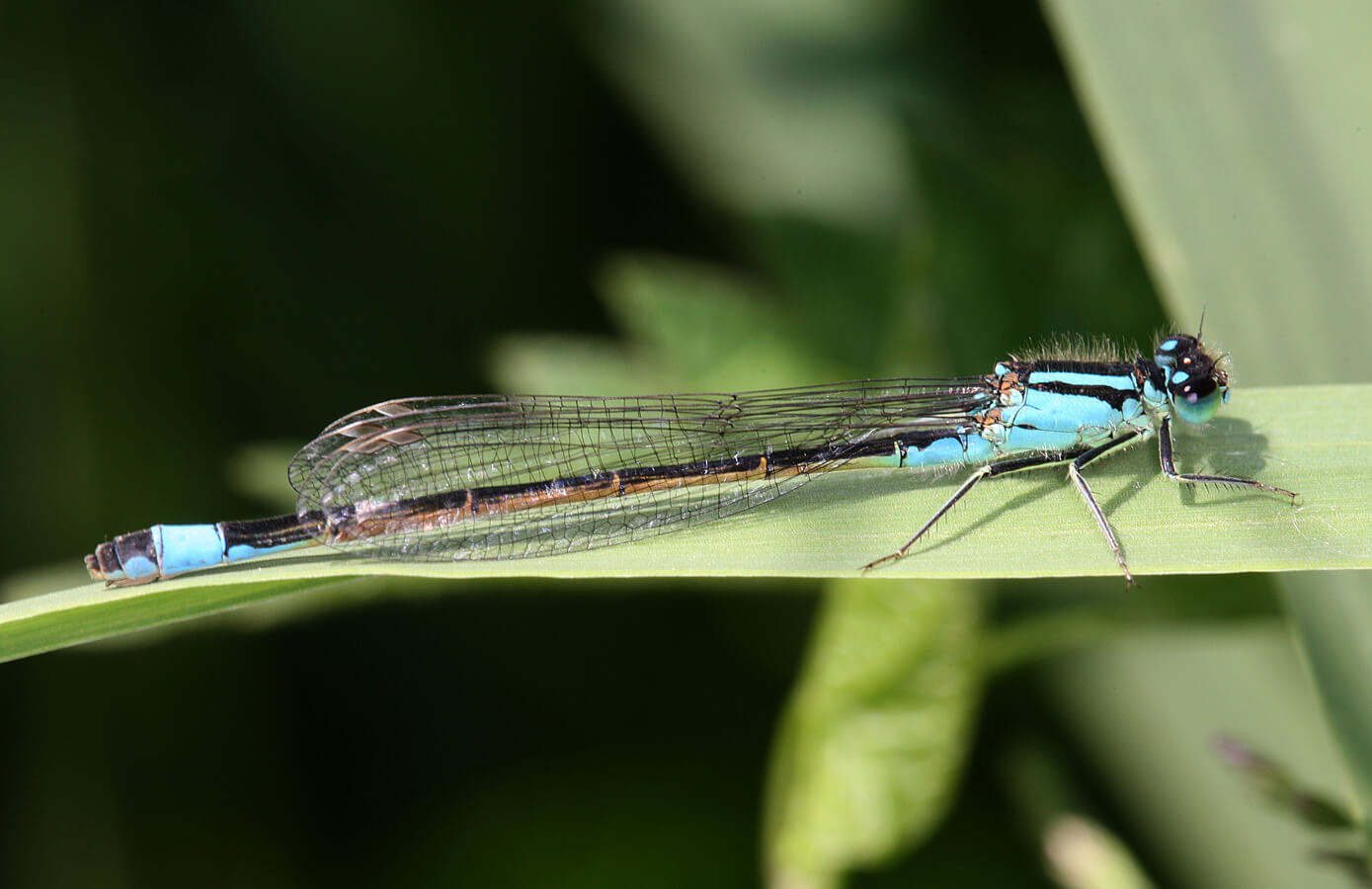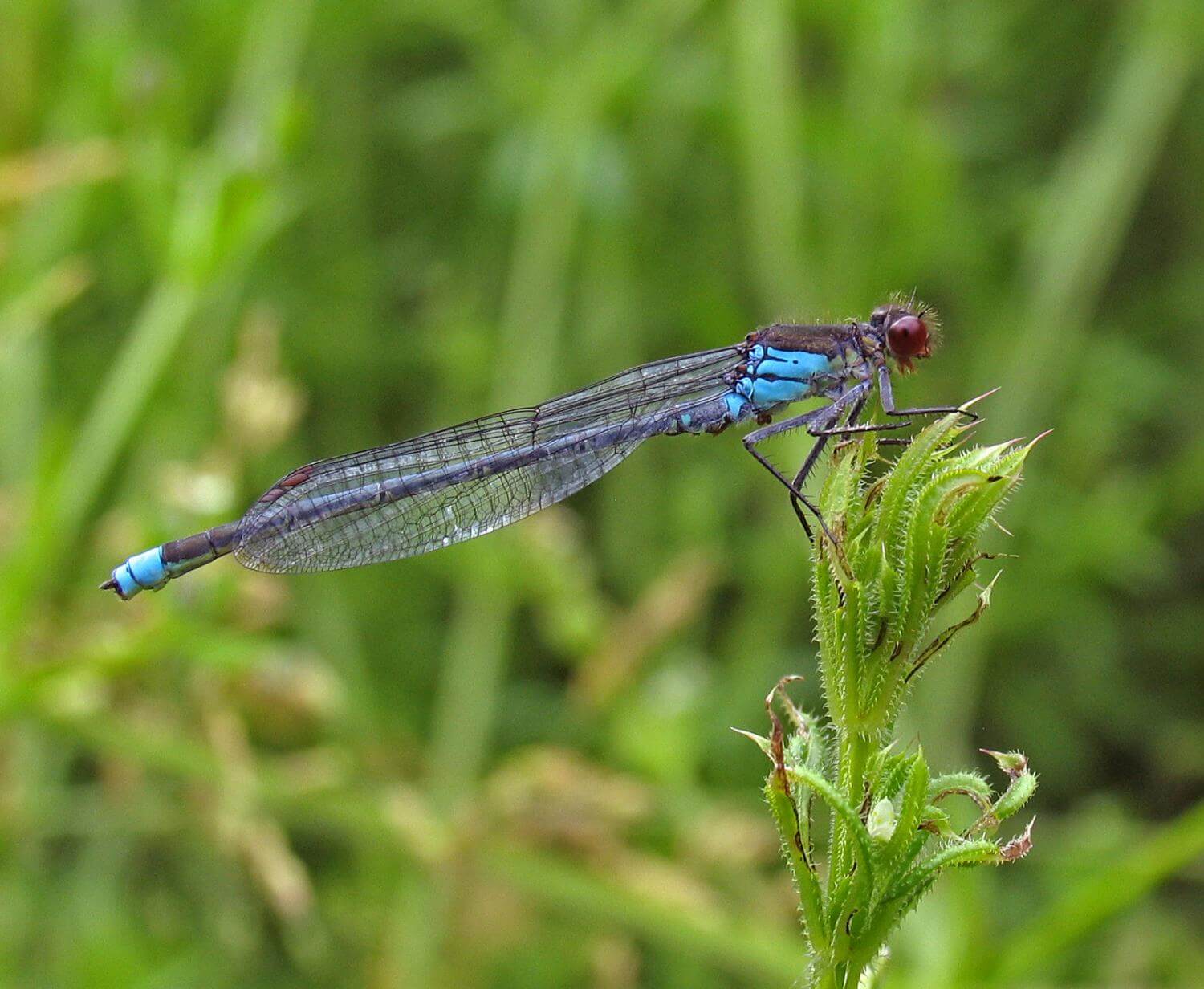Species Information:
Length: 31mm
Flight Period: April to September (occasionally early October)
Male and female both have bi-coloured pterostigma on the front wings.
Male: always have a blue spot at the "tail" (segment 8), blue ante-humeral stripes on the thorax and blue eyes.
Female: varies with at least 5 different colour forms. The thoracic markings and the tail spot are violet in the immature form violacea, but salmon pink thorax and blue spot in the form "rufescens". When mature the female may be blue (like the male) in the form "typica", olive green thorax and brown spot in the form "infuscans" or pale brown thorax and brown spot in the form "infuscans-obseleta".
Habitat:
Found in a very wide range of lowland habitats including brackish or polluted water where it may be the only species present.Status & Distribution:
Abundant throughout the British Isles.
Similar Species:
The related but uncommon Scarce Blue-tailed Damselfly superficially resembles this species but has a different position for the tail spot. At a glance could be confused with the two Red-eyed Damselfly species: Red-eyed Damselfly (Erythromma najas) and Small Red-eyed Damselfly (E. viridulum) but are smaller, less robust looking insects and do not have red eyes.


_0.jpg)

.jpg)

.jpg)